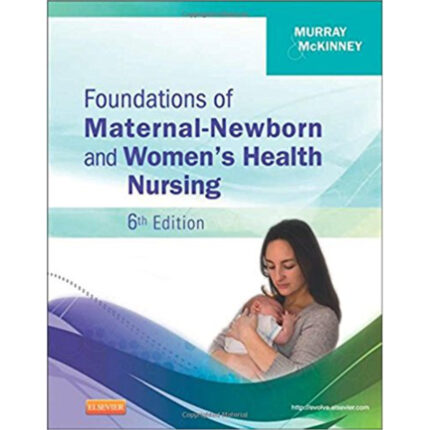Wong’s Nursing Care Of Infants And Children,10th Edition By Marilyn – Test Bank
Chapter 11: Health Problems of the Infant
MULTIPLE CHOICE
1. Rickets is caused by a deficiency in what?
a. Vitamin A
b. Vitamin C
c. Folic acid and iron
d. Vitamin D and calcium
ANS: D
Fat-soluble vitamin D and calcium are necessary in adequate amounts to prevent rickets. No correlation exists between rickets and folic acid, iron, or vitamins A and C.
DIF: Cognitive Level: Remembering REF: p. 452
TOP: Nursing Process: Assessment MSC: Client Needs: Physiological Integrity
2. Which factors will decrease iron absorption and should not be given at the same time as an iron supplement?
a. Milk
b. Fruit juice
c. Multivitamin
d. Meat, fish, poultry
ANS: A
Many foods interfere with iron absorption and should be avoided when iron is consumed. These foods include phosphates found in milk, phytates found in cereals, and oxalates found in many vegetables. Vitamin C–containing juices enhance the absorption of iron. Multivitamins may contain iron; no contraindication exists to taking the two together. Meat, fish, and poultry do not affect absorption.
DIF: Cognitive Level: Understanding REF: p. 454 TOP: Nursing Process: Planning
MSC: Client Needs: Physiological Integrity
3. The nurse is helping parents achieve a more nutritionally adequate vegetarian diet for their children. Which is most likely lacking in their particular diet?
a. Fat
b. Protein
c. Vitamins C and A
d. Iron and calcium
ANS: D
Deficiencies can occur when various substances in the diet interact with minerals. For example, iron, zinc, and calcium can form insoluble complexes with phytates or oxalates (substances found in plant proteins), which impair the bioavailability of the mineral. This type of interaction is important in vegetarian diets because plant foods such as soy are high in phytates. Fat and vitamins C and A are readily available from vegetable sources. Plant proteins are available.
DIF: Cognitive Level: Applying REF: p. 454
TOP: Integrated Process: Teaching/Learning
MSC: Client Needs: Physiological Integrity
4. A 1-year-old child is on a pure vegetarian (vegan) diet. This diet requires supplementation with what?
a. Niacin
b. Folic acid
c. Vitamins D and B12
d. Vitamins C and E
ANS: C
Pure vegetarian (vegan) diets eliminate any food of animal origin, including milk and eggs. These diets require supplementation with many vitamins, especially vitamin B6, vitamin B12, riboflavin, vitamin D, iron, and zinc. Niacin, folic acid, and vitamins C and E are readily obtainable from foods of vegetable origin.
DIF: Cognitive Level: Applying REF: p. 453 TOP: Nursing Process: Planning
MSC: Client Needs: Physiological Integrity
5. What is marasmus?
a. Deficiency of protein with an adequate supply of calories
b. Syndrome that results solely from vitamin deficiencies
c. Not confined to geographic areas where food supplies are inadequate
d. Characterized by thin, wasted extremities and a prominent abdomen resulting from edema (ascites)
ANS: C
Marasmus is a syndrome of emotional and physical deprivation. It is not confined to geographic areas were food supplies are inadequate. Marasmus is characterized by gradual wasting and atrophy of body tissues, especially of subcutaneous fat. The child appears old, with flabby and wrinkled skin. Marasmus is a deficiency of both protein and calories.
DIF: Cognitive Level: Understanding REF: p. 456
TOP: Nursing Process: Assessment MSC: Client Needs: Physiological Integrity
6. At a well-child check-up, the nurse notes that an infant with a previous diagnosis of failure to thrive (FTT) is now steadily gaining weight. The nurse should recommend that fruit juice intake be limited to no more than how much?
a. 4 oz/day
b. 6 oz/day
c. 8 oz/day
d. 12 oz/day
ANS: A
Restrict juice intake in children with FTT until adequate weight gain has been achieved with appropriate milk sources; thereafter, give no more than 4 oz/day of juice.
DIF: Cognitive Level: Understanding REF: p. 465 TOP: Nursing Process: Planning
MSC: Client Needs: Physiological Integrity
7. An infant has been diagnosed with an allergy to milk. In teaching the parent how to meet the infant’s nutritional needs, the nurse states that
a. Most children will grow out of the allergy.
b. All dairy products must be eliminated from the child’s diet.
c. It is important to have the entire family follow the special diet.
d. Antihistamines can be used so the child can have milk products.
ANS: A
Approximately 80% of children with cow’s milk allergy develop tolerance by the fifth birthday. The child can have eggs. Any food that has milk as a component or filler is eliminated. These foods include processed meats, salad dressings, soups, and milk chocolate. Having the entire family follow the special diet would provide support for the child, but the nutritional needs of other family members must be addressed. Antihistamines are not used for food allergies.
DIF: Cognitive Level: Applying REF: p. 460
TOP: Integrated Process: Teaching/Learning
MSC: Client Needs: Physiological Integrity
8. Lactose intolerance is diagnosed in an 11-month-old infant. Which should the nurse recommend as a milk substitute?
a. Yogurt
b. Ice cream
c. Fortified cereal
d. Cow’s milk–based formula
ANS: A
Yogurt contains the inactive lactase enzyme, which is activated by the temperature and pH of the duodenum. This lactase activity substitutes for the lack of endogenous lactase. Ice cream and cow’s milk–based formula contain lactose, which will probably not be tolerated by the child. Fortified cereal does not have the nutritional equivalents of milk.
DIF: Cognitive Level: Applying REF: p. 462
TOP: Integrated Process: Teaching/Learning
MSC: Client Needs: Physiological Integrity
9. Which term refers to the relative lactase deficiency observed in preterm infants of less than 34 weeks of gestation?
a. Congenital lactase deficiency
b. Primary lactase deficiency
c. Secondary lactase deficiency
d. Developmental lactase deficiency
ANS: D
Developmental lactase deficiency refers to the relative lactase deficiency observed in preterm infants of less than 34 weeks of gestation. Congenital lactase deficiency occurs soon after birth after the newborn has consumed lactose-containing milk. Primary lactase deficiency, sometimes referred to as late-onset lactase deficiency, is the most common type of lactose intolerance and is manifested usually after 4 or 5 years of age. Secondary lactase deficiency may occur secondary to damage of the intestinal lumen, which decreases or destroys the enzyme lactase.
DIF: Cognitive Level: Understanding REF: p. 462
TOP: Nursing Process: Assessment MSC: Client Needs: Physiological Integrity
10. Which statement best describes colic?
a. Periods of abdominal pain resulting in weight loss
b. Usually the result of poor or inadequate mothering
c. Periods of abdominal pain and crying occurring in infants older than age 6 months
d. A paroxysmal abdominal pain or cramping manifested by episodes of loud crying
ANS: D
Colic is described as paroxysmal abdominal pain or cramping that is manifested by loud crying and drawing up the legs to the abdomen. Weight loss is not part of the clinical picture. There are many theories about the cause of colic. Emotional stress or tension between the parent and child is one component. This is not consistent throughout all cases. Colic is most common in infants younger than 3 months of age.
DIF: Cognitive Level: Understanding REF: p. 470
TOP: Nursing Process: Assessment MSC: Client Needs: Physiological Integrity













Reviews
There are no reviews yet.